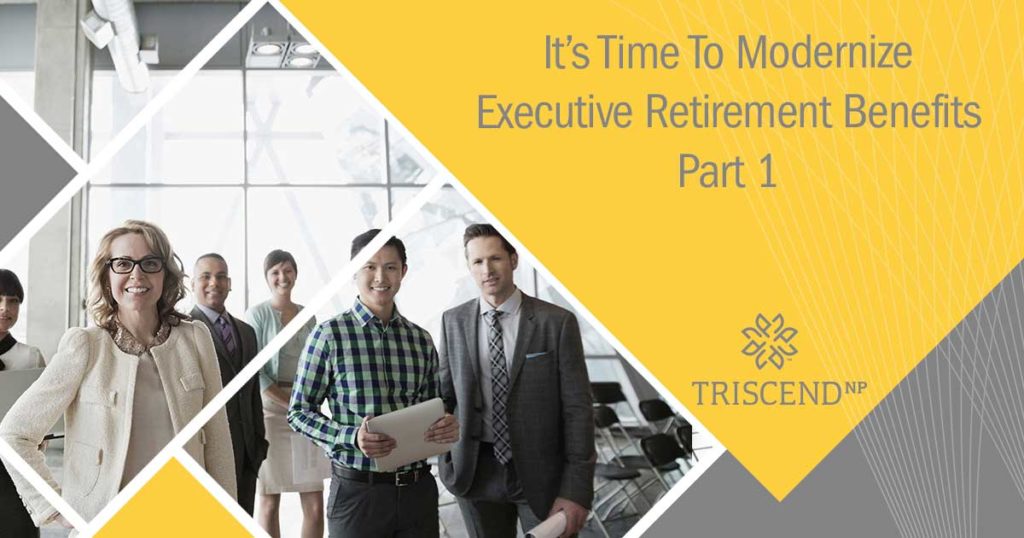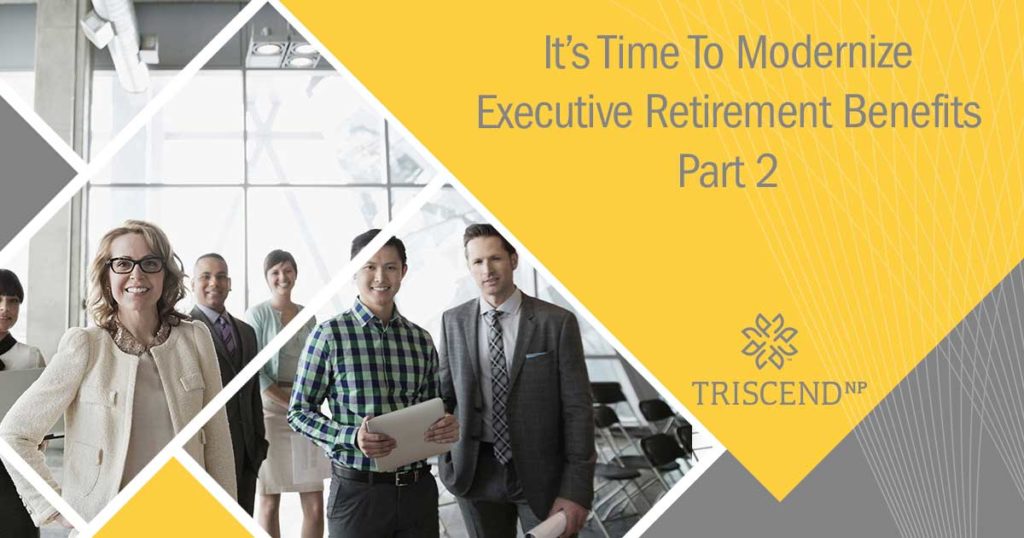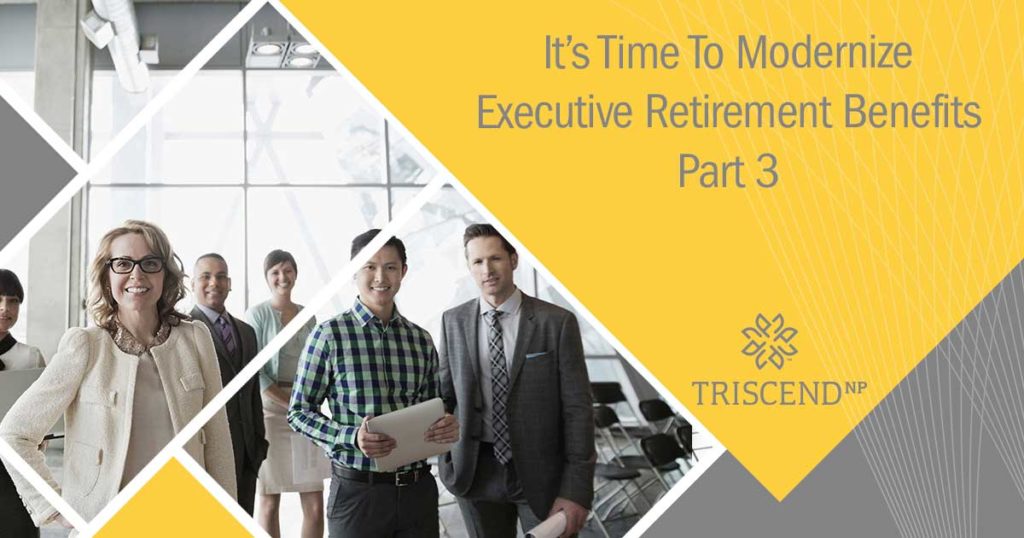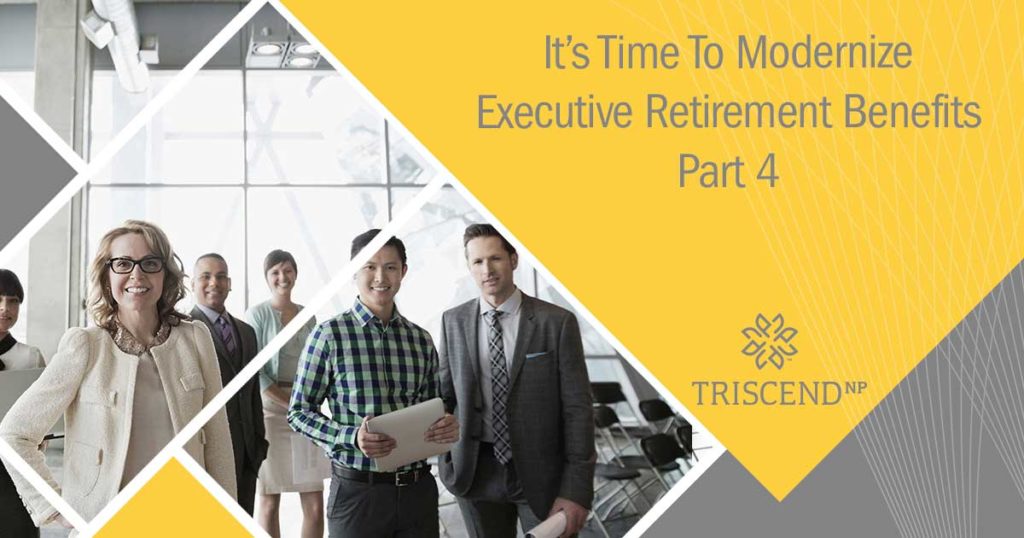
An Invitation to Join a Dialogue
Most deferred compensation plans are significantly underfunded due to the inaccuracy of the underlying assumptions. Other “Design” options are dependent on the accuracy of these assumptions as well. The goal of these articles is to explore ways to spend less money … not more … and to do so more intelligently. This article discusses the various issues associated with “Rate of Return.” Our guest author is Dale Edwards from TriscendNP.
Understanding the Assumptions – Rate of Return, And Why it Matters Now and in the Future
Looking at rate of return is a lot like looking at identical triplets. Yes, the three of them look nearly identical. But if you look closely, there are subtle differences. Each of them gets into trouble in different ways. The three different rates of return are:
- Rate of Return – Pre-Retirement
- Rate of Return – At Retirement (nicknamed “Discount Rate”)
- Rate of Return – Post-Retirement
Yes, their parents gave them odd nicknames, but let’s look at each one more closely.
Rate of Return – Pre-Retirement
He is the oldest and most well-known of the triplets and is an estimate of the investment returns realized by a funded defined benefit plan, or a target-benefit defined contribution plan prior to being distributed to an executive. He likes to brag about how big he is, and the larger he is, the more people like him. That’s because the bigger he appears to be, the less you have to spend to achieve the desired goal.
He thinks he is going to get a 7-8% rate of return, but how does he actually do? Well according to DALBAR, an industry-leading expert on investor behavior and historical returns, the average equity investor realized 5.19% over the last 20-years1. Those of you with defined benefit plans have, no doubt, seen this triplet revise his bravado downward, which means you’ll be spending more money for the same target benefit. But for those of you with target-benefit defined contribution plans, it’s the executive who is about to receive less, probably a lot less.
Rate of Return – At Retirement (nicknamed “Discount Rate”)
He is less well known than his older brother and only comes out to play when a defined benefit plan is involved. These plans typically pay a lump-sum at retirement equal to the present value of the defined benefit. This is where Discount Rate comes in … he likes to brag that he is just as big as his older brother … say 7-8%. But Discount Rate forgets that we live in a country where humans pay taxes on investment gains. Once the executive receives the lump sum, he pays taxes on the investment gains thereafter. So a discount rate of 7-8% is the equivalent of a 7-8% rate of return after-tax, or the equivalent of a 10-11% pre-tax (assuming a 30% tax rate on investments). Is anyone getting a 10-11% rate of return year-over-year?
Rate of Return – Post-Retirement
Hardly anyone knows about this brother and he comes out to play when a target-benefit defined contribution plan is involved. And this brother doesn’t feel loved because no one cares about how he will do once he “leaves home.” Why should we care how well an executive’s retirement investments perform after he leaves? Well… because we used an assumed rate of return post-retirement to determine how much to contribute to the defined contribution plan. And if this brother is like his others (and he is), he thinks he can do 7-8% after-tax and if we believe him, we will likely underfund the plan.
Why does this matter?
The effect of projected versus actual rate of return can be substantial. By comparing the assumptions used in this article to actual results over the past 20 years, retirement plans would be 25-40% underfunded. By underfunded we mean this … either the organization would need to increase its funding by 25-40%, or the executive will get 25-40% less retirement income at a point in time when plans for a retirement lifestyle are already in place.
It also matters because very few organizations investigate the range of investment options that are available to them. There are a variety of hedged and collared investment products available that have provided substantially more reliable returns while mitigating risk and volatility.
We waited until the end of this article to tell you that there is actually a fourth brother in this family. His name is “Volatility” and he is the bad sheep of the clan. We will explore his impact on retirement plans in the next article.
Dale K. Edwards is a Principal and Co-founder of TriscendNP, a leading national provider of executive benefit structures and administration.











